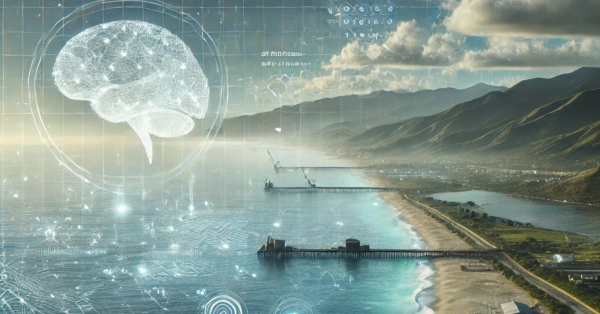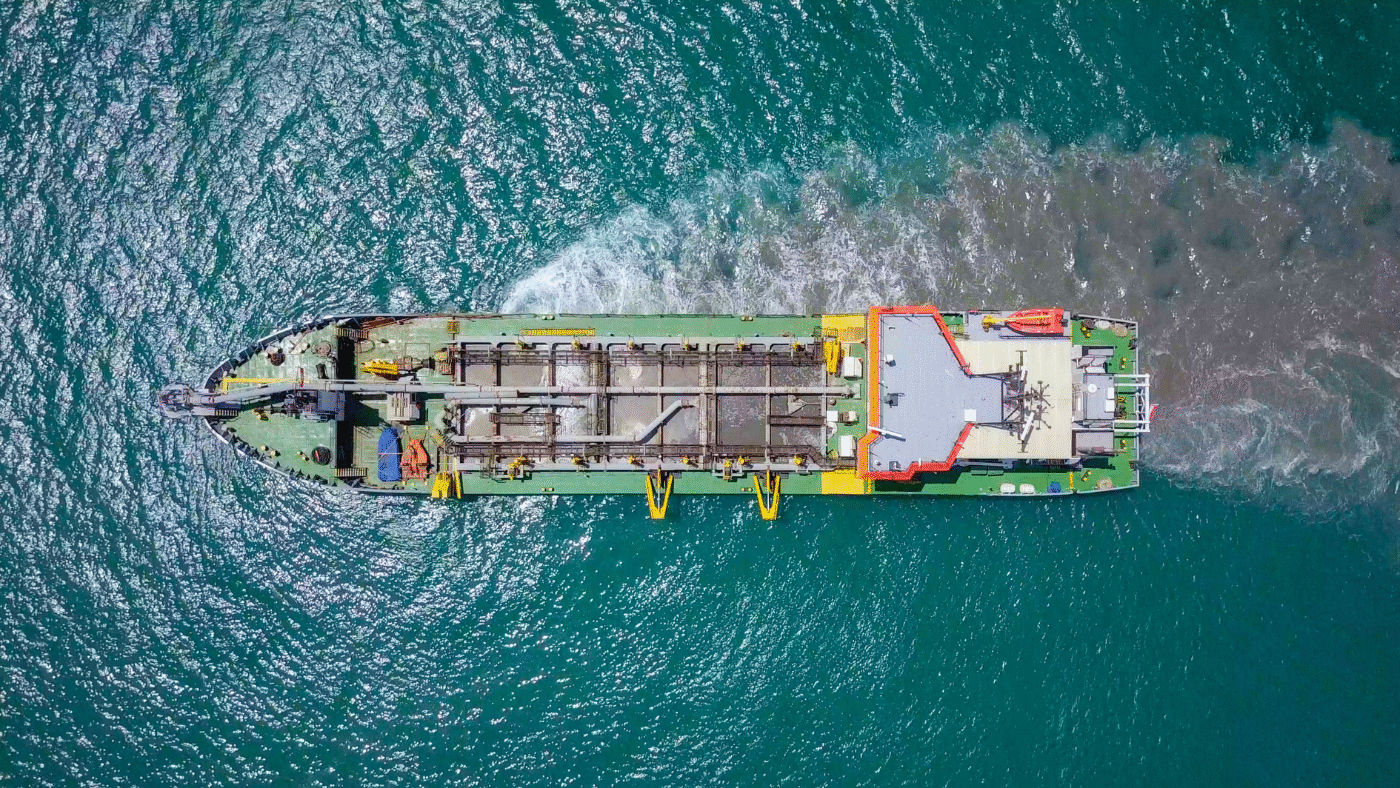The growing demand for marine infrastructure such as ports, and critical facilities with marine interfaces such as cooling systems for nuclear power plants and dredging and reclamation for ports, poses significant challenges for environmental conservation. Coastal regions around the world need to balance between the need for marine infrastructure and the protection of extremely sensitive coastal habitats. These challenges necessitate innovative marine construction practices that align with the United Nations Sustainable Development Goals (SDGs). This paper investigates how marine construction can actively contribute to achieving sustainable development through environmentally conscious design, resilient infrastructure, and global collaboration.
What Are Some of the Current Marine Practices and Their Impacts?
Environmental Challenges
Traditional marine construction often involves significant dredging, land reclamation, and use of non-renewable materials, leading to habitat destruction for marine flora and fauna. Dredging activities are destructive to sediment layers, often releasing harmful substances trapped in the seabed, which can reduce water quality and impact aquatic ecosystems. Land reclamation frequently results in the loss of critical coastal habitats such as mangroves, salt marshes, and seagrass beds, which provide important nurseries for marine life and act as natural barriers against storm surges.
Increased sedimentation caused by these activities can cover coral reefs and reduce sunlight to them, adversely affecting photosynthetic organisms. This can disrupt entire marine food systems, leading to ecological imbalances.
Moreover, the reliance on heavy machinery and energy intensive processes significantly contributes to greenhouse gas emissions, conflicting with global climate targets. The production and transportation of traditional construction materials like cement and steel further exacerbate the carbon footprint of marine projects. Without sustainable practices, these challenges undermine efforts to align with the UN SDGs, particularly Goals 13 (Climate Action) and 14 (Life Below Water).
Social and Economic Challenges
Largescale marine construction projects, such as port expansions or land reclamation will often impact entire coastal communities. These impacts disrupt traditional livelihoods, cultural aspects, and social networks. Fishing communities and indigenous populations, who rely on coastal ecosystems, are particularly vulnerable to the loss of access to fishing grounds and natural resources.
Marine infrastructure projects promise economic growth and improved connectivity, however their benefits are often unevenly distributed. Urban centres and affluent communities typically gain more from such projects, leaving marginalised groups and rural areas with limited access to improved infrastructure. This disparity can perpetuate social and economic inequalities, hampering the goals of inclusive development.
Decision making processes for marine construction projects often exclude meaningful input from local communities and stakeholders (I have experienced this firsthand). Without their participation, projects may fail to address local needs, cultural considerations, or potential conflicts. This exclusion not only leads to mistrust and opposition, but can also result in projects that are poorly aligned with local priorities, reducing their long-term viability and social acceptance.
Strategies for Alignment with SDGs
What are some of the sustainable materials and construction techniques available?
The adoption of sustainable materials and advanced construction techniques is essential to reduce the environmental footprint of marine infrastructure projects. Using alternatives like geopolymer concrete, which produces significantly lower CO2 emissions than traditional Portland cement, and incorporating recycled aggregates. Utilising renewable resources such as timber, bamboo, or bio-composites for non-structural elements where applicable.
We can waste and energy use by assembling prefabricated components offsite, which can also minimise construction timelines and disruptions to sensitive habitats.
Where possible we can also learn from standards such as LEED (Leadership in Energy and Environmental Design) or BREEAM (Building Research Establishment Environmental Assessment Method) to guide sustainable practices during marine and coastal construction.
How do we incorporate renewable energy into marine infrastructure?
Marine construction projects can integrate renewable energy sources to both power operations and contribute to sustainable energy systems. Integrating wind turbines into marine infrastructure, such as port operations or coastal protection systems, can generate clean energy. Another option could be to install energy converters to harness power from tidal flows and wave movements, especially in regions with significant tidal ranges.
Harnessing solar power by placing photovoltaic panels on buildings, docks, or other structures to provide renewable energy for operational needs is perhaps an area that could be further explored by the marine construction industry.
What are some of the ways we can reduce the carbon footprint of marine projects?
Reducing the carbon footprint of marine projects is critical to aligning with climate action goals. Strategies include utilising electric or hybrid-powered construction machinery and vessels to reduce emissions. Another option is to plan supply chains and transport routes to minimise fuel consumption and associated emissions.
Also investing in carbon offset projects, such as reforestation or renewable energy initiatives, to counterbalance unavoidable emissions can have positive impact. Another tool to assist in reducing the carbon footprint is a ‘Lifecycle Assessment’ which can evaluate and optimise the environmental impact of materials and processes across the entire project lifecycle.
The construction industry is evolving rapidly, with Artificial Intelligence (AI) playing a major role in improving efficiency and sustainability. These technologies allow companies to monitor energy use, track emissions, and optimize processes in real time. By using smart sensors and predictive analytics, construction teams can spot inefficiencies, automate resource allocation, and cut down on waste, leading to lower costs and smarter decision making.
AI driven models can analyse past project data to predict delays, equipment failures, or excessive energy consumption, helping teams identify issues.
Beyond efficiency and sustainability, AI tools are also improving safety and productivity. We now also seeing wearable sensors that can monitor workers for signs of fatigue or stress, while AI powered cameras and drones help track progress and detect potential hazards on site.
Future Directions in Marine Construction
The future of marine construction is being shaped by a growing emphasis on sustainability, technological innovation, and regulatory improvements. As coastal infrastructure projects continue to expand, we need to balance development with environmental responsibility. As the industry moves forward, materials, automation, and tighter policies will of course help in reducing environmental impacts while providing a robust and efficient approach to projects.
To drive sustainable progress, governments and industry leaders should collaborate and push for tighter environmental regulations for marine construction. Stronger policies will help to minimise habitat disruption and ensure that projects meet long term sustainability goals. Also offering financial incentives for companies adopting sustainable construction methods, such as renewable energy integration and new alternative materials, can encourage broader industry adoption. Establishing standardised sustainability benchmarks for marine infrastructure will also provide clearer guidelines, ensuring that all projects adhere to the highest environmental and operational standards.
Expert Support Aligned with UN SDGs
As marine infrastructure development accelerates, aligning construction practices with the United Nations Sustainable Development Goals is essential. VERTEX supports clients in achieving these goals through expert consultancy, risk management, and claims resolution. With extensive international experience, VERTEX experts specialise in the planning, design, and delivery of large-scale infrastructure projects, offering strategic insight into dispute resolution and technical challenges in marine environments. Backed by our multidisciplinary team, we help clients navigate every stage of project execution—from sustainable design to forensic investigations and cost analysis.
Interested in sustainable marine development? Contact Nicholas Cane to learn how VERTEX can support your project





